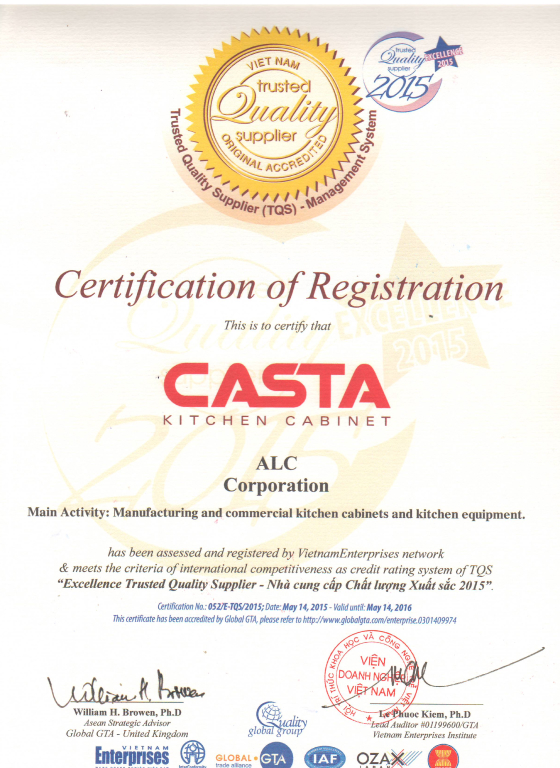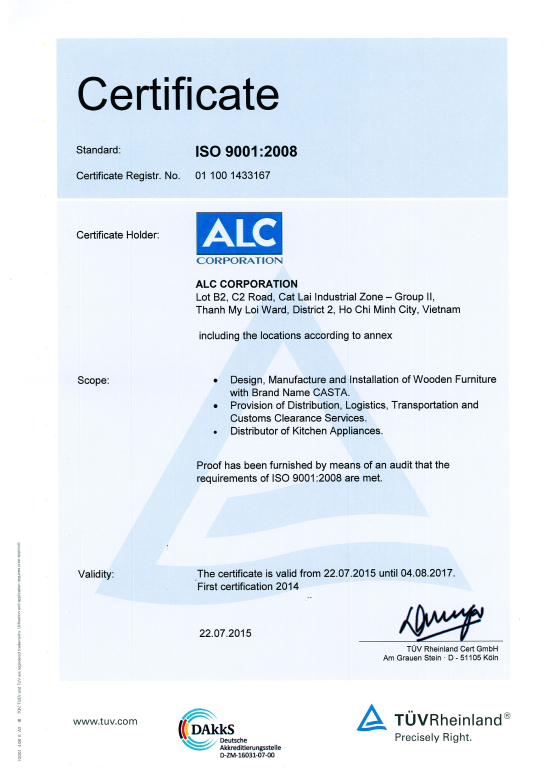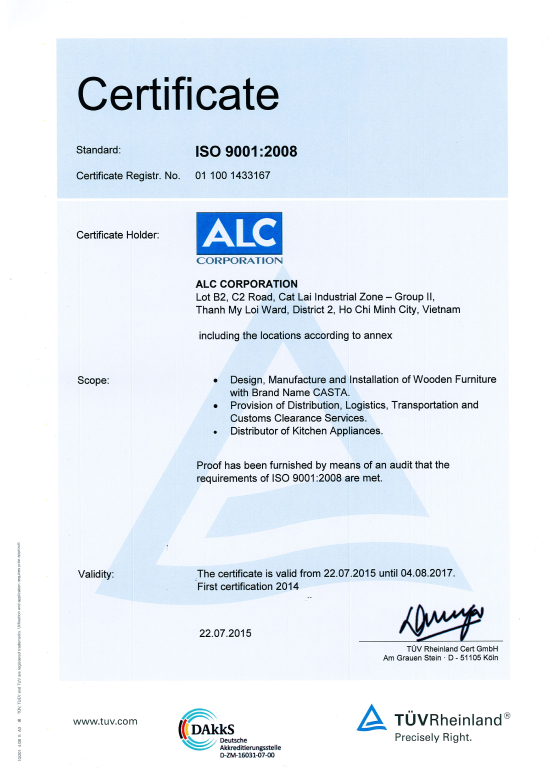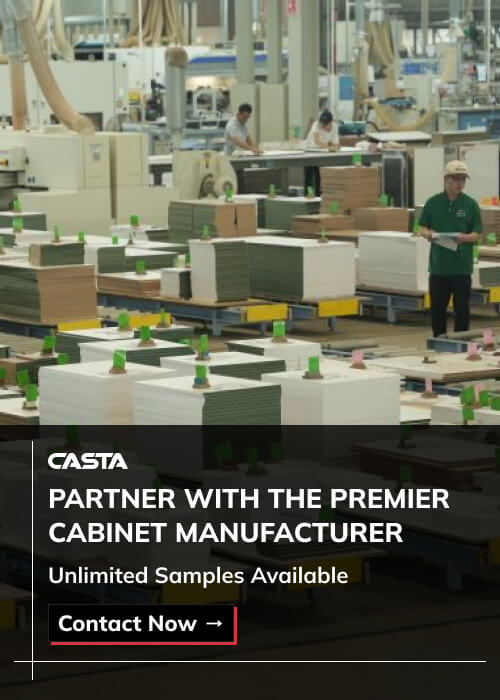Cabinet hinges are essential components of both residential and commercial cabinetry projects. While often overlooked, they play a critical role in ensuring the durability, functionality, and overall aesthetic appeal of cabinets. For contractors and cabinet brands, selecting the appropriate hinge type can make the difference between a well-functioning, long-lasting product and a cabinet that wears out prematurely or doesn’t align with the design expectations.
From soft-close mechanisms to traditional butt hinges, understanding the available options will empower professionals to deliver superior results. This guide provides a detailed look into the types of cabinet hinges used in modern projects, including soft-close cabinet hinges, adjustable cabinet hinges, and other cabinet hinge types. With insights into installation techniques, durability, and customization, this article will help contractors and cabinet brands make informed decisions for their clients.
Table of Contents
1. Types of Cabinet Hinges
Choosing the correct cabinet hinge type is essential to ensure both functional and aesthetic goals are met. Below, we examine the main types of cabinet hinges used in modern cabinetry, providing key information on their applications and benefits.
1.1 Butt Hinges
Butt hinges are one of the most traditional types of cabinet hinges. They consist of two plates connected by a pivoting pin. One plate is attached to the cabinet frame, while the other is mounted to the door. The hinge is visible from the outside, giving the cabinet a classic look. Though straightforward in their design, butt hinges are durable and capable of supporting heavy cabinet doors.
- Best For: Traditional, heavy-duty cabinets
- Cost Range: Low
- Ease of Installation: Easy
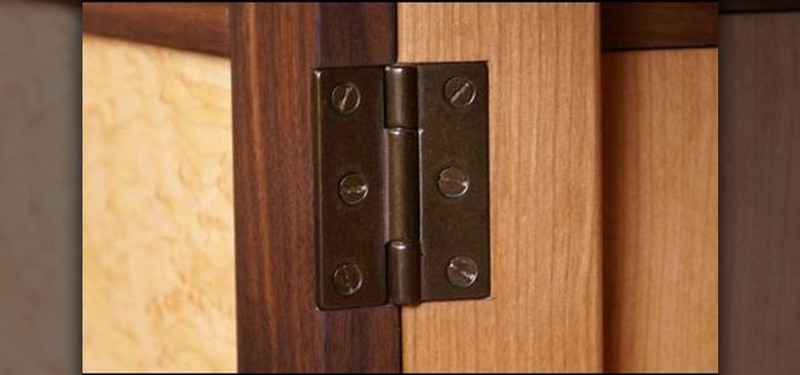
Butt hinges are best suited for face-frame cabinets. Their exposed nature makes them a popular choice for rustic and farmhouse-style cabinetry, where visible hardware enhances the aesthetic. Despite their simple appearance, butt hinges offer substantial load-bearing capacity, making them a reliable choice for heavy cabinets.
1.2 European (Concealed) Hinges
European hinges, also known as concealed hinges, have become a popular choice in contemporary and modern cabinetry. As the name suggests, they are concealed within the cabinet frame, giving the cabinet a seamless, clean look from the outside. European hinges are typically used in frameless cabinets, making them a go-to for minimalistic designs.
- Best For: Frameless, modern cabinets
- Cost Range: Medium
- Ease of Installation: Requires precision
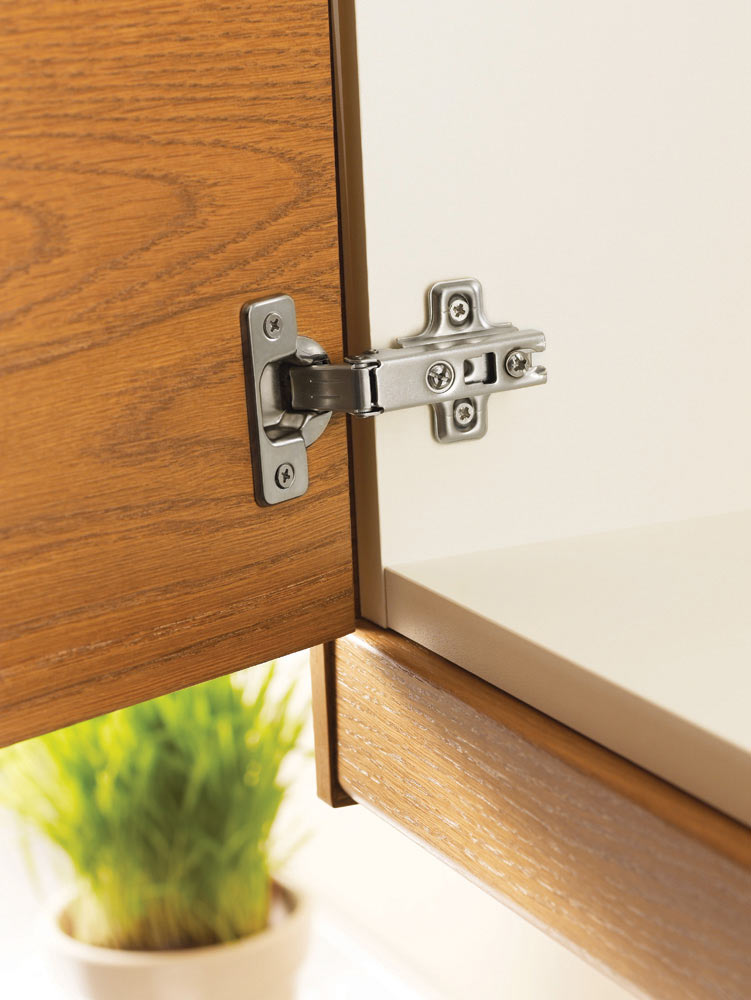
What makes European hinges highly desirable is their adjustability. Contractors can easily make post-installation adjustments to the cabinet doors, ensuring perfect alignment. These hinges are often combined with soft-close mechanisms, adding functionality and luxury to the project.
Learn more:
- Framed vs Frameless Cabinets: Which one is better for contractors?
- Framed vs Frameless Cabinets Cost - Which Option Fits Your Budget?
1.3 Inset Hinges
Inset hinges are designed for cabinets where the doors are mounted flush with the cabinet frame. These hinges allow the door to sit inside the frame, creating a clean, custom-built look. Inset hinges are either exposed or concealed, depending on the cabinet’s design and the client’s preferences.
- Best For: Custom and inset cabinetry designs
- Cost Range: High
- Ease of Installation: Requires precision for flush alignment
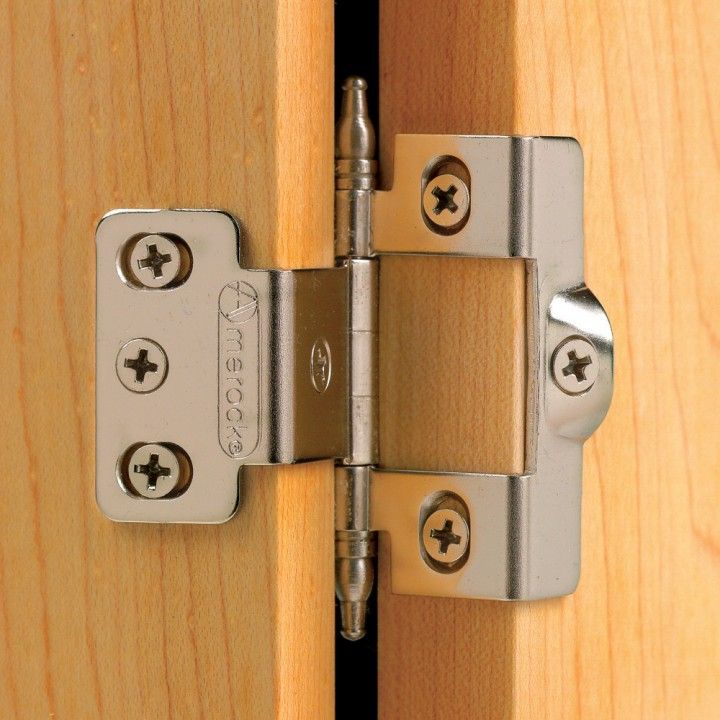
Inset hinges are widely used in high-end custom cabinetry, where precision is key. The flush appearance of the doors gives the cabinetry a refined, tailored look, making these hinges ideal for luxury residential projects.
Learn more: Understanding the Cost of Custom Cabinetry - A Comprehensive Guide
1.4 Overlay Hinges
Overlay hinges are another popular hinge type, especially in both full-overlay and partial-overlay cabinets. These hinges are versatile, used in designs where the door covers part or all of the cabinet frame.
- Best For: Full and partial overlay cabinets
- Cost Range: Medium
- Ease of Installation: Easier than inset hinges
Learn more:
- Frameless Cabinets vs Full Overlay - Which Style Fits Your Design?
- What are Overlay Cabinets? A Comprehensive Guide
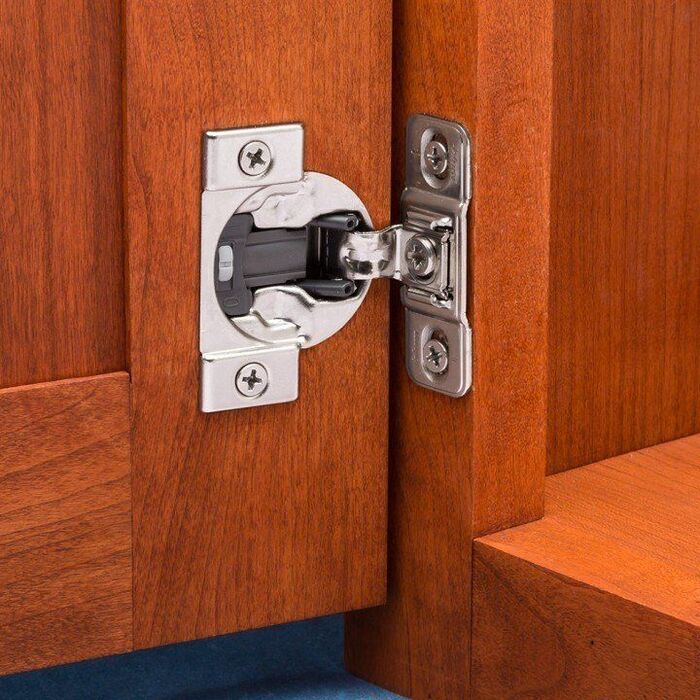
Overlay hinges allow for flexibility in terms of how much of the cabinet frame is covered by the door. Full-overlay hinges cover the entire frame, creating a continuous surface that is visually clean. Partial-overlay hinges, on the other hand, reveal part of the cabinet frame and are commonly used in more traditional designs.
Learn more: Inset vs Overlay Cabinets: Key Differences, Costs, and Which to Choose
1.5 Pivot Hinges
Pivot hinges are designed for specialty or corner cabinets, allowing the doors to rotate on a pivot point. These hinges are ideal for cabinets with bi-fold doors or those requiring unique door movement, such as lazy Susan cabinets in kitchens.
- Best For: Corner and specialty cabinets
- Cost Range: High
- Ease of Installation: Complex
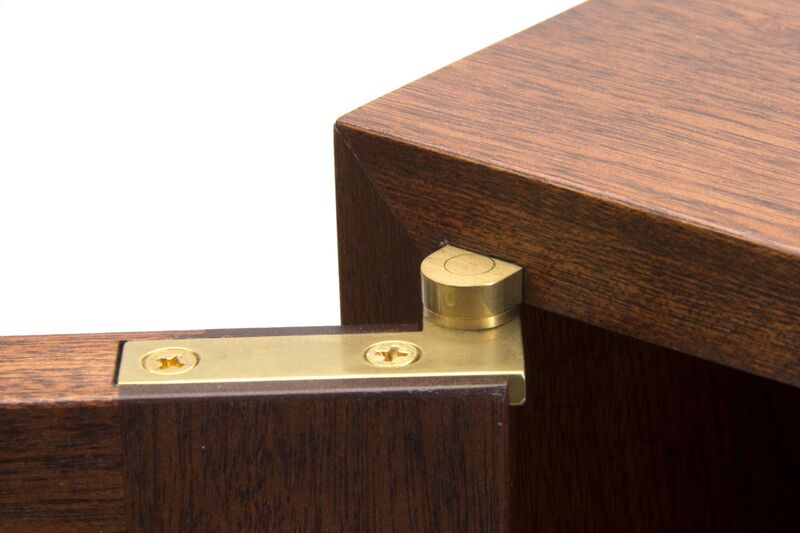
Pivot hinges are a niche choice but essential for cabinets with non-standard configurations. They provide fluid movement for doors that need to rotate inward or fold open, making them a perfect solution for hard-to-access spaces like corner cabinets.
Learn more: Corner Cabinet Dimensions – A Practical Guide for Contractors and Cabinet Brands
2. Specialized Hinge Types for Unique Cabinet Applications
While traditional hinges are suitable for most cabinets, certain projects demand specialized hinge types. Below are some advanced hinge options for unique applications.
2.1 Soft-Close Cabinet Hinges
Soft-close hinges have grown increasingly popular in high-end kitchens and bathroom cabinetry. These hinges include a hydraulic mechanism that ensures doors close gently and quietly without slamming.
- Best For: Luxury residential and commercial projects
- Cost Range: High
- Ease of Installation: Moderate, requires precise alignment
Learn more: Bathroom vanity manufacturers
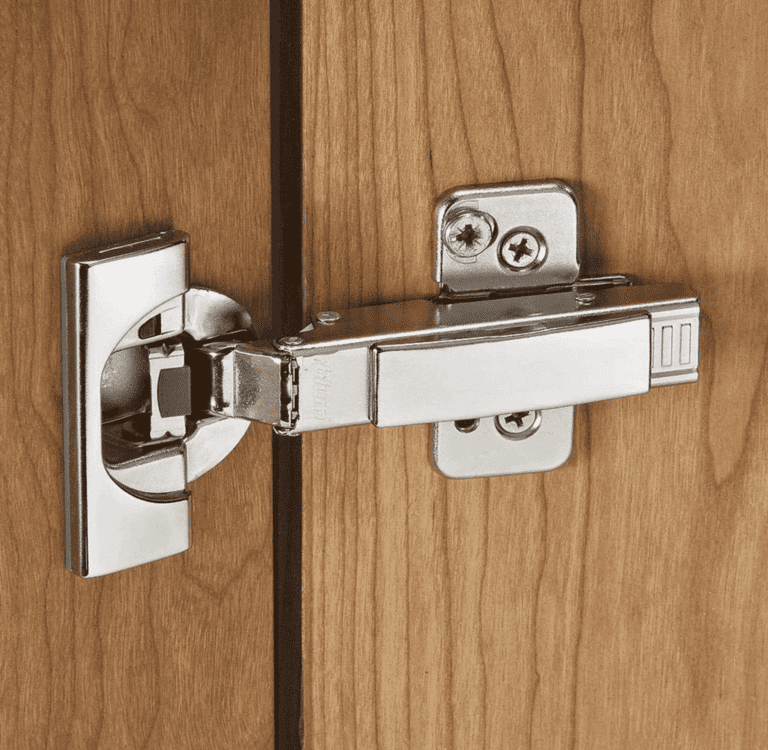
The main benefit of soft-close hinges is the enhanced user experience. By preventing doors from slamming, they help extend the life of the cabinetry while adding a premium touch.
Learn more: Types of Cabinet Hardware - Key Materials, and How to Choose the Right One
2.1 Adjustable Cabinet Hinges
Adjustable cabinet hinges allow contractors and cabinet makers to fine-tune the door's alignment even after the hinges have been installed. This flexibility makes them particularly useful in larger projects or when dealing with uneven surfaces.
- Best For: Large-scale and custom cabinetry
- Cost Range: Medium
- Ease of Installation: Requires some adjustment but offers post-installation flexibility
These hinges are ideal for projects where precision is critical. They allow fine-tuning of the door’s height, depth, and lateral alignment, ensuring that doors open and close flawlessly even in less-than-perfect conditions.
3. Key Factors to Consider When Choosing Cabinet Hinges
Selecting the right hinge is not as simple as picking one that "looks good." A number of factors must be taken into consideration to ensure the hinge fits the project’s requirements.
3.1 Cabinet Style
The type of cabinet hinge chosen must align with the cabinet style. For instance, butt hinges are often used in traditional or rustic cabinetry, while European hinges are a better fit for modern, frameless cabinets.
3.2 Door Weight and Size
The door’s weight and size determine the type of hinge required. Heavier doors need hinges with high load-bearing capacities, such as butt hinges or European concealed hinges. For lighter doors, overlay hinges or soft-close hinges might be sufficient.
3.3 Durability and Maintenance
Soft-close hinges tend to last longer due to their gentle closing action, which reduces wear and tear. Butt hinges, though simple, are robust and can support heavy doors over extended periods.
3.4 Installation Complexity
Some hinges, like European concealed hinges, require precision drilling and alignment, while others, like butt hinges, are simpler to install. Consider how much time and effort the installation process will take when selecting cabinet hinges for a project.
3.5 Cost Factors
High-end hinges such as soft-close or adjustable hinges typically cost more upfront but offer greater functionality and longevity. Butt hinges are among the more affordable options, making them ideal for budget-conscious projects.
3.6 Comparison Table
| Hinge Type | Best For | Cost Range | Ease of Installation |
| Butt Hinges | Traditional, heavy-duty cabinets | Low | Easy |
| European Hinges | Frameless, modern cabinets | Medium | Moderate |
| Soft-Close Hinges | High-end projects | High | Moderate |
| Pivot Hinges | Corner/specialty cabinets | High | Complex |
4. Installation and Maintenance Tips for Contractors
Proper installation is critical for ensuring that the hinges function as intended. Below are some key tips for successful hinge installation and maintenance.
4.1 How to Measure and Install Cabinet Hinges
- Measure the Overlay: Determine how much of the cabinet frame the door will cover. This measurement helps select the right hinge and ensures proper alignment.
- Pre-Drill Holes: Pre-drill screw holes in both the door and frame to avoid splitting the wood during installation.
- Attach Hinges: Secure the hinge to the door first, then align it with the frame and attach it using screws.
- Adjust Hinges: If using adjustable hinges, make sure the door is aligned perfectly before tightening all screws.
4.2 Maintenance Advice
- Tighten Screws: Over time, screws can become loose due to frequent use. Regularly check and tighten screws to maintain door alignment.
- Lubricate Moving Parts: Apply a silicone-based lubricant to moving parts like soft-close mechanisms to ensure smooth operation.
- Clean Hinges Regularly: Dust and debris can accumulate over time, affecting hinge performance. Wipe down hinges with a dry cloth periodically to remove buildup.
5. Customization Options
Customization is often key when working with high-end clients. For instance, custom finishes like brass or matte black can be added to the hinges to match the cabinetry’s hardware. Similarly, adjustable hinges can be fine-tuned post-installation to accommodate design changes or preferences.
By offering a range of finishes, materials, and installation options, contractors can meet both the functional and aesthetic needs of their clients.
6. Casta Cabinetry: Superior Hinge Solutions for Custom Projects
Casta Cabinetry is a leading provider of high-quality hinge solutions for custom cabinetry projects. Their products are manufactured using advanced European machinery, ensuring precise alignment and smooth operation.
Soft-close and adjustable hinges are among Casta's top offerings, designed to meet the needs of high-end residential and commercial projects. Casta also offers customization options for those looking to tailor the hardware to specific design preferences, ensuring both functionality and aesthetics are top-notch.
Learn more: Casta's Outstanding International Projects
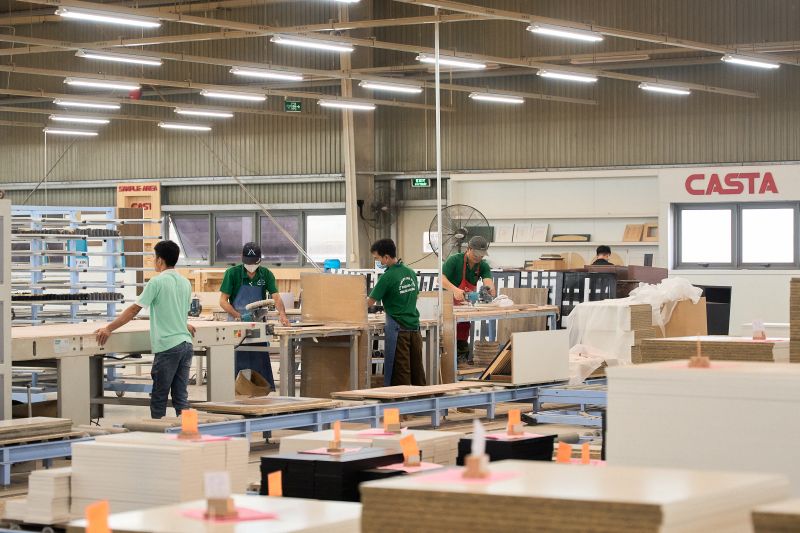
7. Industry Trends: The Rising Demand for Advanced Hinges in North America
In the North American market, soft-close and concealed hinges have seen a significant rise in demand. These hinges are now considered standard in modern kitchens and bathrooms due to their sleek design and functionality. Additionally, sustainable materials and finishes, such as low-VOC coatings, are becoming more popular as clients and builders prioritize environmentally friendly choices.
As technology advances, smart hinges with electronic components are starting to make their way into the market, offering even more customization and functionality for high-tech kitchen and bathroom designs.
8. FAQ
What are the best types of hinges for frameless cabinets?
How do soft-close hinges work?
Can I adjust cabinet hinges after installation?
Selecting the appropriate cabinet hinges is essential for ensuring both functionality and aesthetics in any cabinetry project. From traditional butt hinges to modern soft-close and European concealed hinges, each type serves a specific purpose that can enhance the overall design and operation of the cabinets.
Contractors and cabinet brands should carefully consider the cabinet style, door weight, and client preferences when selecting hinges. By offering a variety of high-quality hinge options, Casta Cabinetry ensures that every project is completed to the highest standards.
Related articles:
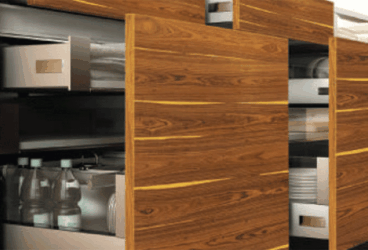
MDF vs Plywood for Kitchen Cabinets – Which is Better?...
MDF vs Plywood for kitchen cabinets is one of the most important decisions contractors and furniture brands must make wh...
11/14/2025 | David Nguyen
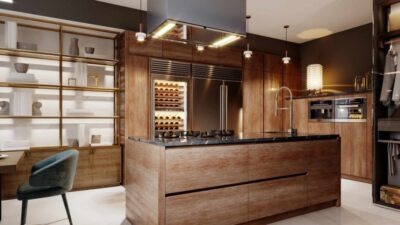
Plywood Kitchen Cabinets: Pros and Cons Explained for Contra...
Plywood kitchen cabinets are now one of the most preferred options in modern kitchen manufacturing, combining durability...
11/12/2025 | David Nguyen
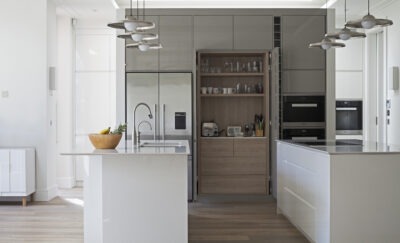
Best Italian Kitchen Cabinets: Modern Design, Precision Craf...
Italian kitchen cabinets represent the gold standard in modern kitchen design — celebrated for their craftsmanship, slee...
10/29/2025 | David Nguyen
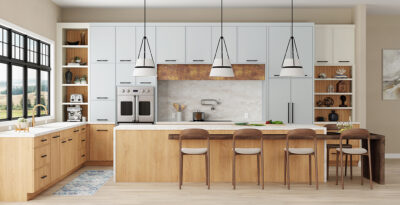
European vs American Kitchen Cabinets: Key Differences &...
European vs American kitchen cabinets is a core decision for anyone specifying cabinetry for modern buildings or homes. ...
10/27/2025 | David Nguyen
Contact us
Casta is always ready to listen and answer all customers' questions
